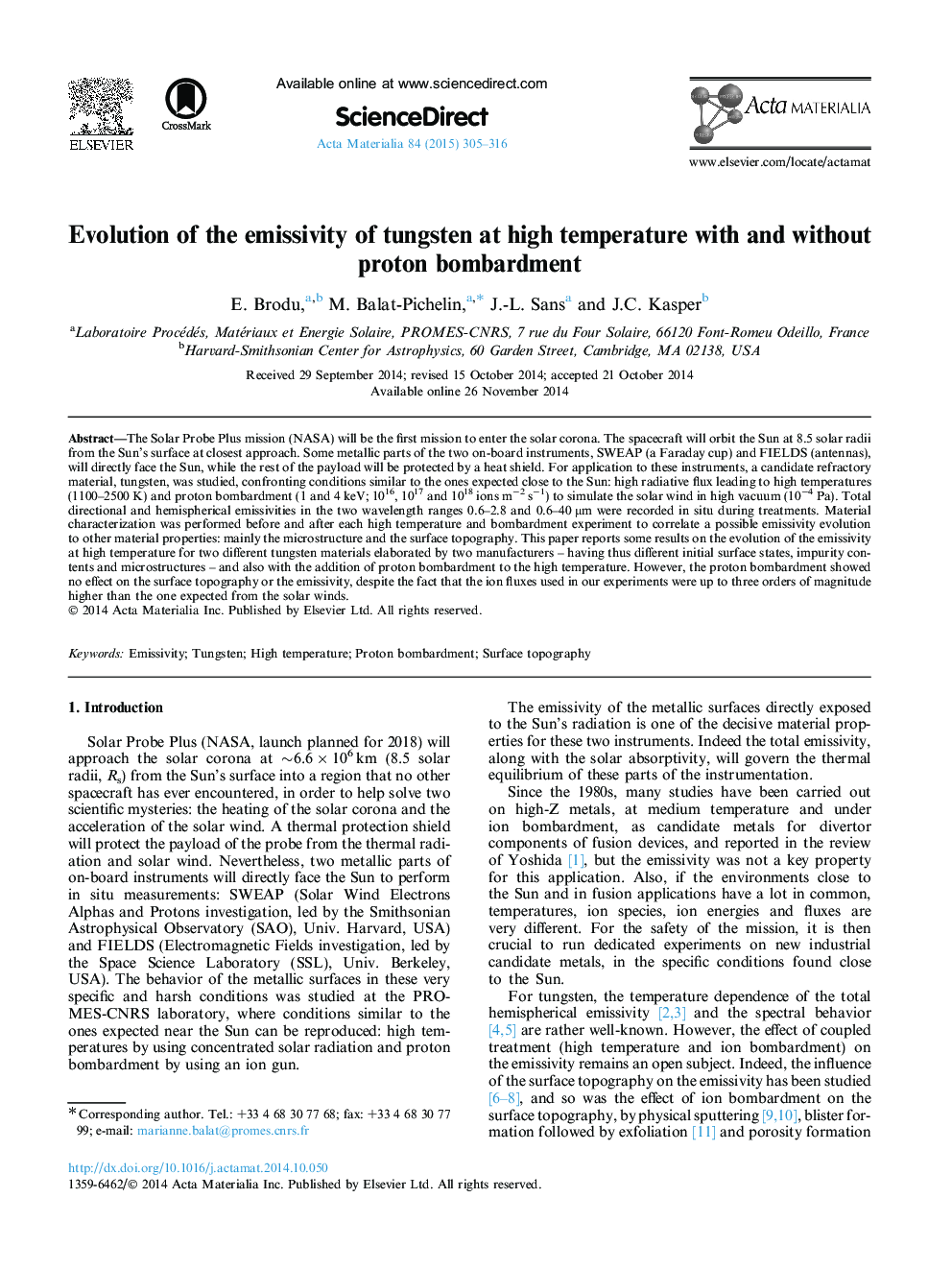| کد مقاله | کد نشریه | سال انتشار | مقاله انگلیسی | نسخه تمام متن |
|---|---|---|---|---|
| 1445438 | 1509592 | 2015 | 12 صفحه PDF | دانلود رایگان |
The Solar Probe Plus mission (NASA) will be the first mission to enter the solar corona. The spacecraft will orbit the Sun at 8.5 solar radii from the Sun’s surface at closest approach. Some metallic parts of the two on-board instruments, SWEAP (a Faraday cup) and FIELDS (antennas), will directly face the Sun, while the rest of the payload will be protected by a heat shield. For application to these instruments, a candidate refractory material, tungsten, was studied, confronting conditions similar to the ones expected close to the Sun: high radiative flux leading to high temperatures (1100–2500 K) and proton bombardment (1 and 4 keV; 1016, 1017 and 1018 ions m−2 s−1) to simulate the solar wind in high vacuum (10−4 Pa). Total directional and hemispherical emissivities in the two wavelength ranges 0.6–2.8 and 0.6–40 μm were recorded in situ during treatments. Material characterization was performed before and after each high temperature and bombardment experiment to correlate a possible emissivity evolution to other material properties: mainly the microstructure and the surface topography. This paper reports some results on the evolution of the emissivity at high temperature for two different tungsten materials elaborated by two manufacturers – having thus different initial surface states, impurity contents and microstructures – and also with the addition of proton bombardment to the high temperature. However, the proton bombardment showed no effect on the surface topography or the emissivity, despite the fact that the ion fluxes used in our experiments were up to three orders of magnitude higher than the one expected from the solar winds.
3D surface topography (left) and SEM micrograph (right) of a Plansee W sample exposed at 1700 K with a 4 keV proton bombardment up to 1018 ions m−2 s−1.Figure optionsDownload high-quality image (550 K)Download as PowerPoint slide
Journal: Acta Materialia - Volume 84, 1 February 2015, Pages 305–316
